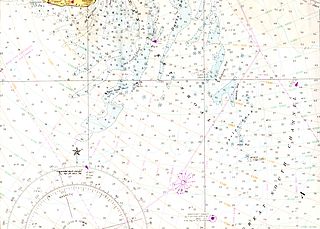
A lightvessel, or lightship, is a ship that acts as a lighthouse. They are used in waters that are too deep or otherwise unsuitable for lighthouse construction. Although some records exist of fire beacons being placed on ships in Roman times, the first modern lightvessel was off the Nore sandbank at the mouth of the River Thames in London, England, placed there by its inventor Robert Hamblin in 1734. The type has become largely obsolete; lighthouses replaced some stations as the construction techniques for lighthouses advanced, while large, automated buoys replaced others.
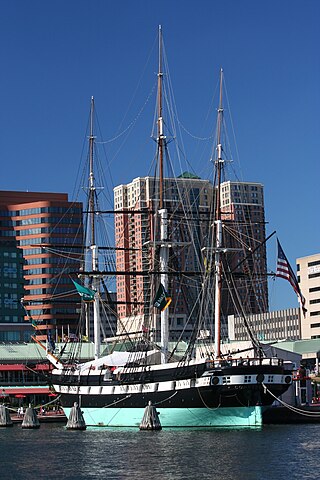
Historic Ships in Baltimore, created as a result of the merger of the USS Constellation Museum and the Baltimore Maritime Museum, is a maritime museum located in the Inner Harbor of Baltimore, Maryland in the United States.

United States lightship Chesapeake (LS-116/WAL-538/WLV-538) is a museum ship owned by the National Park Service and on a 25-year loan to Baltimore City, and is operated by Historic Ships in Baltimore Museum in Baltimore, Maryland. A National Historic Landmark, she is one of a small number of preserved lightships. Since 1820, several lightships have served at the Chesapeake lightship station and have been called Chesapeake. Lightships were initially lettered in the early 1800s, but then numbered as they were often moved from one light station to another. The name painted on the side of lightships was the short name of the Light Station they were assigned to and was the daytime visual aspect of the many Aids to Navigation on board lightships. The United States Coast Guard assigned new hull numbers to all lightships still in service in April 1950. After that date, Light Ship 116 was then known by the new Coast Guard Hull number: WAL-538. In January 1965 the Coast Guard further modified all lightship hull designations from WAL to WLV, so Chesapeake became WLV-538.
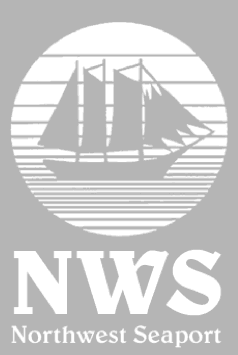
Northwest Seaport Maritime Heritage Center is a nonprofit organization in Seattle, Washington dedicated to the preservation and interpretation of Puget Sound and Northwest Coast maritime heritage, expressed through educational programs and experiences available to the public aboard its ships. The organization owns three large historic vessels docked at the Historic Ships' Wharf in Seattle's Lake Union Park; the tugboat Arthur Foss (1889), Lightship 83 Swiftsure (1904), and the halibut fishing schooner Tordenskjold (1911). These vessels are used as platforms for a variety of public programs, ranging from tours and festivals to restoration workshops and vocational training.

Craney Island is a point of land in the independent city of Portsmouth in the South Hampton Roads region of eastern Virginia in the United States. The location, formerly in Norfolk County, is near the mouth of the Elizabeth River opposite Lambert's Point on Hampton Roads. It is home to the Craney Island US Naval Supply Center, managed by the U.S. Army Corps of Engineers.
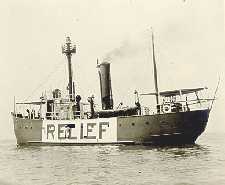
The United States lightship Huron (LV-103) is a lightvessel that was launched in 1920. She is now a museum ship moored in Pine Grove Park, Port Huron, St. Clair County, Michigan.

United States lightship Columbia (WLV-604) is a lightship located in Astoria, Oregon, United States of America. Columbia was formerly moored near the mouth of the Columbia River.

Light Vessel Number 83 (LV-83) Swiftsure is a lightship and museum ship owned by Northwest Seaport in Seattle, Washington. Launched in 1904 at Camden, New Jersey and in active service until 1960 after serving on all five of the American west coast's lightship stations, it is the oldest surviving lightship in the United States, the only one still fitted with its original steam engine, and the last lightship with wooden decks. LV-83 was designated a National Historic Landmark in 1989, and has been undergoing major restoration since 2008.
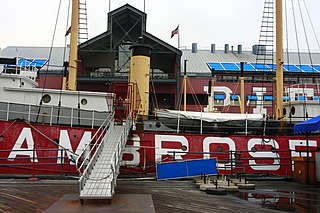
Lightship Ambrose was the name given to multiple lightships that served as the sentinel beacon marking Ambrose Channel, New York Harbor's main shipping channel.

Wolf Trap Light is a caisson lighthouse in the Virginia portion of the Chesapeake Bay, about seven and a half miles northeast of New Point Comfort Light. It is listed on the National Register of Historic Places.

United States lightship Nantucket (LV-112) is a National Historic Landmark lightship that served at the Lightship Nantucket position. She was the last serving lightship and at time of its application as a landmark, one of only two capable of moving under their own power. She served as the lightship for such notable vessels as the liners United States, Queen Mary, and Normandie.
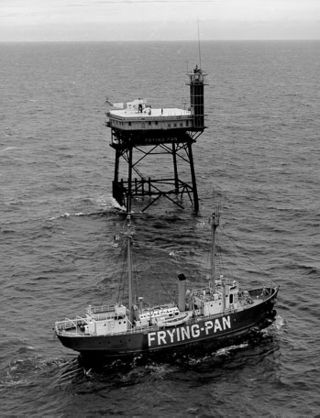
Frying Pan (LV-115) is a lightvessel moored at Pier 66a in the Chelsea neighborhood of Manhattan in New York City. It served at Frying Pan Shoals, off Cape Fear in North Carolina, for over 30 years.

United States lightship Relief (WLV-605) is a lightvessel now serving as a museum ship in Oakland, California. Built in 1950, she is one of a small number of surviving lightships, and one of an even smaller number built specifically for the United States Coast Guard. Along with her sister ship, the WLV-604 Columbia, she is a good example of the last generation of lightships built. She was declared a National Historic Landmark in 1989.

The Craney Island Light was a screwpile lighthouse located just east of Craney Island at the mouth of the Elizabeth River in Virginia. This light replaced the first permanently stationed lightship in the United States.

Lightship No. 114, later U.S. Coast Guard WAL 536, that served as lightship Fire Island (NY), Examination Vessel, Diamond Shoal (NC), 1st District relief vessel, Pollock Rip (MA) and Portland (ME). After decommissioning in 1971, in 1975 the lightship became a historic ship at the State Pier in New Bedford, Massachusetts. She received little maintenance, and eventually sank at her moorings in 2006 and was sold for scrap the next year.

The United States lightship Barnegat (LV-79/WAL-506), is located in Camden, Camden County, New Jersey, United States. The lightship was built in 1904 and was added to the National Register of Historic Places on 29 November 1979.
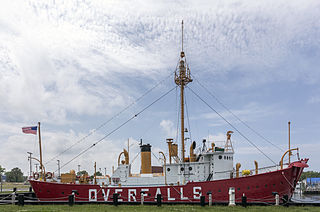
Lightship Overfalls (LV-118) was the last lightvessel constructed for the United States Lighthouse Service before the Service became part of the United States Coast Guard. She is currently preserved in Lewes, Delaware as a museum ship.
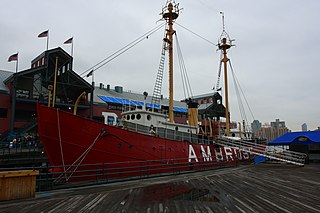
The United States Lightship LV-87/WAL-512 (Ambrose) is a riveted steel lightship built in 1907 and served at the Ambrose Channel lightship station from December 1, 1908, until 1932, and in other posts until her decommissioning in 1966. It is one of a small number of preserved American lightships, and now serves as a museum ship at the South Street Seaport Museum in southern Manhattan, New York City.







